-
 8613931787312
8613931787312 -
 Botou Industrial Zone on the east side of National Highway 104, Botou City, Hebei Province
Botou Industrial Zone on the east side of National Highway 104, Botou City, Hebei Province
- Afrikaans
- Albanian
- Amharic
- Arabic
- Armenian
- Azerbaijani
- Basque
- Belarusian
- Bengali
- Bosnian
- Bulgarian
- Catalan
- Cebuano
- Corsican
- Croatian
- Czech
- Danish
- Dutch
- English
- Esperanto
- Estonian
- Finnish
- French
- Frisian
- Galician
- Georgian
- German
- Greek
- Gujarati
- haitian_creole
- hausa
- hawaiian
- Hebrew
- Hindi
- Miao
- Hungarian
- Icelandic
- igbo
- Indonesian
- irish
- Italian
- Japanese
- Javanese
- Kannada
- kazakh
- Khmer
- Rwandese
- Korean
- Kurdish
- Kyrgyz
- Lao
- Latin
- Latvian
- Lithuanian
- Luxembourgish
- Macedonian
- Malgashi
- Malay
- Malayalam
- Maltese
- Maori
- Marathi
- Mongolian
- Myanmar
- Nepali
- Norwegian
- Norwegian
- Occitan
- Pashto
- Persian
- Polish
- Portuguese
- Punjabi
- Romanian
- Russian
- Samoan
- scottish-gaelic
- Serbian
- Sesotho
- Shona
- Sindhi
- Sinhala
- Slovak
- Slovenian
- Somali
- Spanish
- Sundanese
- Swahili
- Swedish
- Tagalog
- Tajik
- Tamil
- Tatar
- Telugu
- Thai
- Turkish
- Turkmen
- Ukrainian
- Urdu
- Uighur
- Uzbek
- Vietnamese
- Welsh
- Bantu
- Yiddish
- Yoruba
- Zulu
10-20 Liter Fully Automatic Seam Welding Machine - Precision & Efficiency
The Evolution of Precision Welding: Industry Trends Shaping 10-20 Liter Container Fabrication
The manufacturing landscape for industrial containers, particularly in the 10-20 liter range, is undergoing a significant transformation driven by demands for increased production efficiency, enhanced material integrity, and reduced operational costs. Traditional welding methods often struggle to meet the stringent quality controls and high throughput requirements of modern industries such as petrochemical, food & beverage, and chemical processing. This has propelled the market demand for highly specialized automated solutions. The emergence of the 10-20 liter fully automatic seam welding machine represents a pivotal development, addressing these challenges with unparalleled precision and consistency.
Current industry trends highlight a distinct shift towards automation and digitalization. Manufacturers are increasingly investing in smart machinery capable of self-diagnosis, predictive maintenance, and seamless integration into broader Industry 4.0 ecosystems. This drive for intelligence is not merely about speed but also about achieving superior weld quality, minimizing human error, and optimizing resource utilization. Furthermore, regulatory compliance, particularly concerning environmental protection and product safety (e.g., for hazardous materials or food-grade products), necessitates welding solutions that guarantee hermetic seals and robust structural integrity. The demand for durable, corrosion-resistant containers, often fabricated from advanced alloys, further underscores the need for sophisticated welding technologies that can handle diverse material specifications with consistent, repeatable results.
Beyond efficiency, sustainability is a growing concern. Modern welding solutions are expected to contribute to energy savings and reduced material waste. This involves optimized power consumption, precise material handling, and minimal post-welding processing. The integration of advanced control systems allows for real-time monitoring and adjustment, ensuring that each weld meets precise parameters, thereby reducing rework and scrap rates. These macro trends collectively underscore the critical role of highly advanced, automated welding equipment in maintaining competitive advantage in the global manufacturing sector.
Technical Specifications and Engineering Excellence
The design and construction of a 10-20 liter fully automatic seam welding machine are rooted in advanced engineering principles, ensuring robust performance and longevity. These machines are engineered for precision, capable of producing high-quality, continuous welds on cylindrical or rectangular container bodies. Key structural components are typically manufactured from high-grade steel alloys, often through CNC machining processes, to achieve critical tolerances and structural rigidity. The welding torch mechanism, material feeding system, and intelligent control units are integrated to deliver seamless operation.
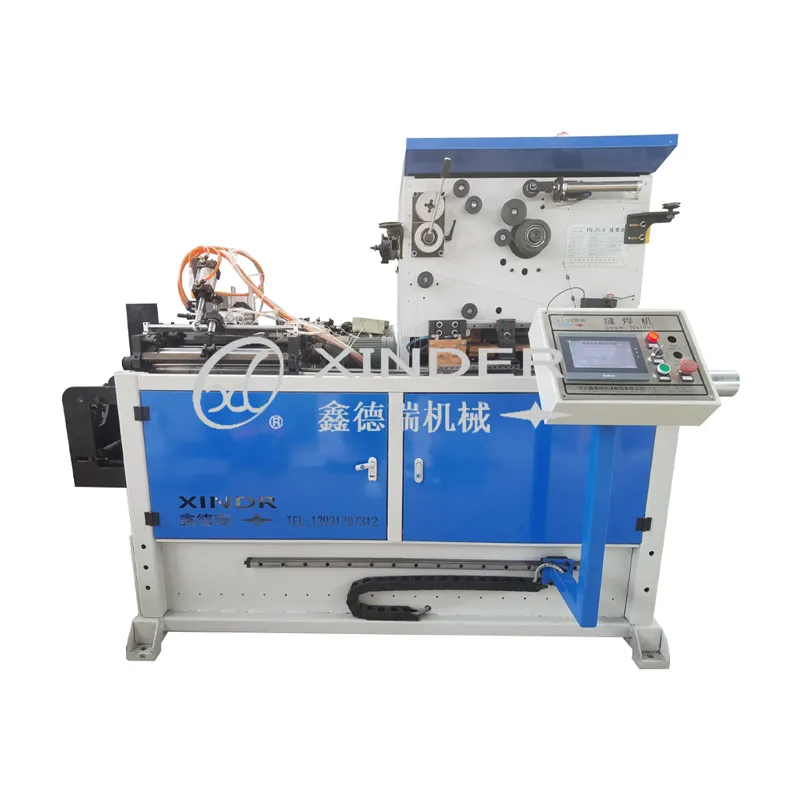
Figure 1: High-precision seam welding operation on a metal container.
Product Specification Table: XDR-SW2000 Series
| Parameter | Specification |
|---|---|
| Container Volume Range | 10-20 Liters |
| Welding Speed | Up to 3-15 m/min (depending on material thickness) |
| Material Thickness | 0.3 - 1.2 mm (Steel, Stainless Steel, Aluminum Alloys) |
| Welding Method | Resistance Seam Welding / TIG Seam Welding (configurable) |
| Control System | PLC-based with HMI touch screen, Real-time monitoring |
| Electrode Life Cycle | > 1,000,000 weld spots (with proper maintenance) |
| Power Consumption | 15-30 kW (peak), 5-10 kW (average operating) |
| Dimensions (L x W x H) | 2500 x 1200 x 1800 mm (approximate) |
| Certifications | CE, ISO 9001:2015 |
The integration of advanced servo motors ensures precise control over electrode force and welding speed, crucial for consistent weld penetration and bead formation. The robust chassis, often weighing several tons, provides the stability required for high-speed operations, minimizing vibrations that could compromise weld quality. Features such as automatic weld parameter adjustment based on material feedback, integrated cooling systems for extended component life, and modular design for easy maintenance exemplify the machine's sophisticated engineering. This meticulous attention to detail at every stage of development contributes significantly to the machine's reliability and performance.
Manufacturing Process Flow of the Automatic Seam Welding Machine
The production of a 10-20 liter fully automatic seam welding machine is a multi-stage, high-precision manufacturing process. It starts with raw material selection and proceeds through various fabrication and assembly phases, all under strict quality control to ensure optimal performance and longevity.
Detailed Process Steps:
-
Material Sourcing & Preparation:
High-strength structural steel (e.g., Q345B or equivalent) for the main frame and chassis, and specialized copper alloys for electrodes and conductive parts, are sourced from certified suppliers. These materials undergo rigorous incoming quality inspection, including chemical composition analysis and mechanical property testing, to comply with ASTM A36/A500 or relevant ISO standards.
-
Frame Fabrication (Casting & Welding):
Large structural components, such as the machine base and main supports, may be manufactured through precision casting processes to achieve complex geometries and high rigidity. These cast elements, along with other steel sections, are then meticulously welded using advanced MIG/MAG or TIG techniques. Post-welding, stress relief annealing is often performed to eliminate residual stresses, enhancing the structural stability and preventing distortion over the machine's service life. Frame components are then machined for critical interfaces.
-
Precision Machining (CNC):
Critical components like the electrode holders, pressure cylinders, and gear housings are manufactured using multi-axis CNC machining centers. This ensures dimensional accuracy down to micrometers, which is essential for smooth operation, precise electrode alignment, and minimal wear. Surface treatments, such as hard chroming or nitriding, are applied to wear-prone surfaces to enhance durability and corrosion resistance.
-
Electrical & Control System Integration:
The PLC (Programmable Logic Controller), HMI (Human-Machine Interface), servo drives, sensors, and power electronics are assembled and wired according to stringent electrical safety standards (e.g., IEC 60204). The control software is then uploaded, calibrated, and extensively tested for functionality, fault tolerance, and responsiveness. Each control module undergoes individual diagnostic checks before final integration.
-
Assembly:
Mechanical, electrical, and pneumatic subsystems are carefully assembled. This includes mounting the welding head, integrating the workpiece handling mechanisms, and connecting cooling systems. Torque specifications for fasteners are strictly adhered to, and alignment procedures are performed using laser-guided instruments to ensure perfect geometric congruence of all moving parts.
-
Pre-delivery Testing & Calibration:
Each machine undergoes comprehensive factory acceptance testing (FAT). This includes endurance testing under simulated production loads, welding performance tests on various material types and thicknesses, and full functional checks of all automated sequences. Weld quality is verified using destructive and non-destructive testing methods (e.g., visual inspection, metallographic analysis, leak testing, pull tests) against standards like ISO 14554 or AWS D1.1. Service life projections typically exceed 15-20 years with proper maintenance, supported by rigorous component selection and testing.
This meticulous process, adhering to international quality management systems like ISO 9001, ensures that every 10-20 liter fully automatic seam welding machine delivered is of the highest quality, capable of delivering consistent, reliable performance in demanding industrial environments.
Application Scenarios Across Diverse Industries
The versatility and precision of the 10-20 liter fully automatic seam welding machine make it indispensable across a spectrum of industrial sectors where robust, leak-proof containers are critical. Its automated capabilities ensure high throughput and superior quality, addressing specific needs within challenging operational environments.
-
Petrochemical Industry:
For the storage and transportation of solvents, lubricants, and various chemical intermediates, containers must exhibit exceptional corrosion resistance and structural integrity. Our machines produce consistently strong, hermetically sealed seams that prevent leakage of volatile or hazardous substances, ensuring compliance with strict safety regulations. The ability to weld stainless steel and specialized alloys efficiently is a major advantage.
-
Metallurgy and Metal Processing:
In this sector, containers often handle aggressive chemical solutions used in surface treatments, pickling, or waste collection. The superior weld quality ensures the longevity of these containers in highly corrosive environments, reducing maintenance costs and ensuring operational continuity. Precision welding minimizes material stress, enhancing the container's resistance to fatigue.
-
Water Supply & Drainage Systems:
While larger pipes are often associated with this industry, smaller tanks or components within purification, filtration, or chemical dosing systems often require highly durable containers. The seam welding machine ensures these components are watertight and capable of withstanding continuous exposure to water and various treatment chemicals without degradation.
-
Food & Beverage Industry:
For processing and storing food ingredients, beverages, or sterile liquids, containers must meet rigorous hygiene and safety standards (e.g., FDA compliance for material contact surfaces). Automated seam welding guarantees smooth, crevice-free welds that prevent bacterial growth and simplify cleaning processes, critical for maintaining product purity and safety.
-
Pharmaceutical & Chemical Industries:
Handling sensitive pharmaceutical intermediates or specialized chemicals requires containers with absolute integrity. The energy-saving features of the automatic welding process contribute to reduced operational expenses, while the consistent, high-quality welds provide unparalleled corrosion resistance, extending the service life of expensive containers and safeguarding valuable contents.
In each of these scenarios, the machine's ability to deliver consistent, high-integrity welds, combined with its automated operation, directly translates into significant advantages: enhanced product safety, prolonged container life, reduced labor costs, and adherence to stringent industry regulations.
Technical Advantages & Operational Efficiencies
The deployment of a modern 10-20 liter fully automatic seam welding machine brings forth a multitude of technical advantages that directly translate into operational efficiencies and significant return on investment for B2B clients. Our commitment to engineering excellence and continuous innovation ensures that our machines stand at the forefront of welding technology.
-
Unmatched Weld Consistency and Quality:
Unlike manual or semi-automatic methods, our fully automatic systems eliminate human variability. Integrated vision systems and real-time parameter monitoring ensure every weld is executed with identical precision, resulting in uniform weld beads, optimal penetration, and superior mechanical strength, significantly reducing defects and rework.
-
High Throughput and Production Speed:
Designed for continuous operation, these machines achieve significantly higher production rates compared to traditional methods. Automated material handling and rapid cycle times mean more containers per hour, directly impacting overall plant capacity and profitability. A single operator can oversee multiple machines, optimizing labor allocation.
-
Energy Efficiency:
Advanced inverter-based power sources and optimized welding cycles reduce energy consumption per weld. Intelligent idle modes and precise power delivery minimize waste, contributing to lower operational costs and a smaller carbon footprint, aligning with modern industrial sustainability goals.
-
Adaptability to Diverse Materials:
Our machines are configured to handle a wide range of materials, including various grades of stainless steel (e.g., 304, 316L), carbon steel, and aluminum alloys. Quick-change tooling and programmable parameters allow for seamless transitions between different material types and container specifications without extensive retooling.
-
Enhanced Safety Features:
Automated systems inherently reduce direct operator exposure to welding hazards such as intense light, fumes, and heat. Integrated safety interlocks, emergency stops, and protective enclosures exceed industry safety standards (e.g., OSHA, EN ISO 12100), ensuring a safer working environment.
-
Extended Service Life and Low Maintenance:
Built with high-quality, durable components and designed for industrial rigor, these machines boast an extended service life. Predictive maintenance features, enabled by integrated diagnostics, minimize downtime and simplify upkeep, ensuring maximum uptime and operational continuity. Many customers report operational lifespans exceeding 15 years with proper preventative maintenance.
Our company holds ISO 9001:2015 certification for quality management, reflecting our commitment to superior product development and manufacturing processes. We have proudly served leading enterprises in the chemical and food packaging sectors for over two decades, accumulating a wealth of experience and expertise in delivering robust welding solutions.
Vendor Comparison: Selecting the Right Automatic Seam Welder
When investing in a 10-20 liter fully automatic seam welding machine, it's crucial for B2B decision-makers to evaluate vendors based on more than just initial cost. Key differentiators lie in technological advancement, customization capabilities, after-sales support, and proven track record. Below is a comparison highlighting common considerations.
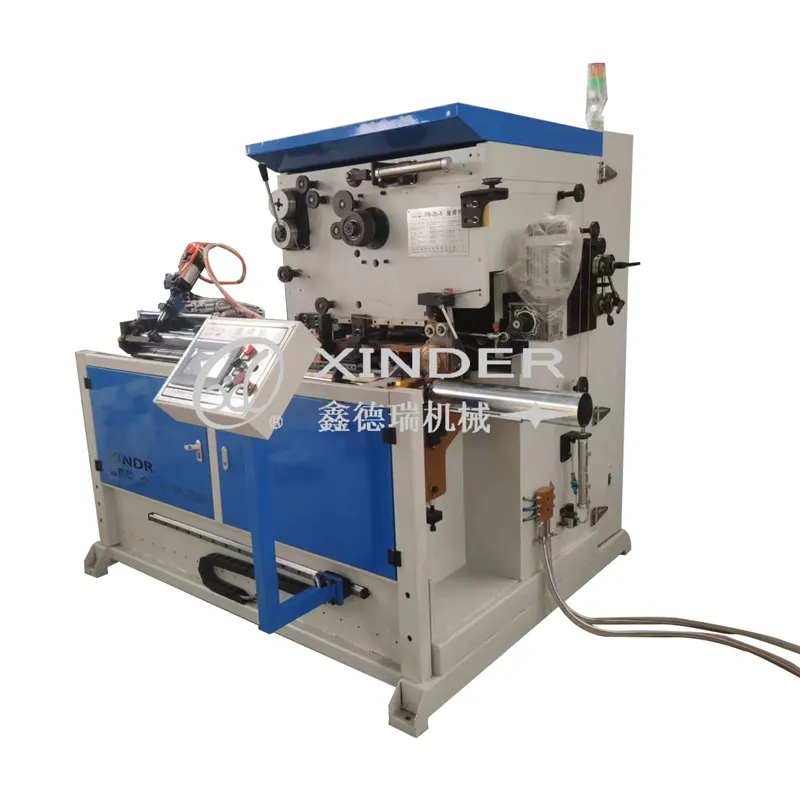
Figure 2: Close-up of automated welding head and control interface.
Comparison Table: Leading Automatic Seam Welding Machines
| Feature/Vendor | XDR Machinery (Example) | Competitor A (Typical) | Competitor B (Entry-Level) |
|---|---|---|---|
| Welding Technology | Resistance/TIG (Configurable, Inverter-based) | Resistance (SCR-based) | Resistance (AC-based) |
| Control System | Advanced PLC with 15" HMI, IoT connectivity, Predictive Maintenance | Basic PLC with 7" HMI, Manual adjustments | Relay logic, Analog controls |
| Material Thickness Range | 0.3 - 1.2 mm | 0.5 - 1.0 mm | 0.6 - 0.8 mm |
| Changeover Time | < 10 min (pre-programmed recipes) | 30-60 min (manual adjustments) | > 60 min (extensive retooling) |
| Energy Efficiency | Excellent (Inverter, power factor correction) | Good (SCR) | Moderate (AC) |
| After-sales Support | Global network, 24/7 remote diagnostics, On-site training | Regional support, Limited remote assistance | Local dealer support only |
This comparison highlights how leading manufacturers distinguish themselves through superior technology, advanced control systems, and comprehensive support. An investment in a high-end machine translates to lower total cost of ownership (TCO) due to higher efficiency, less downtime, and longer operational life. Companies with robust R&D and a proven track record, often backed by extensive certifications and long-standing partnerships, tend to offer more reliable and future-proof solutions.
Customized Solutions & Collaborative Engineering
Recognizing that every manufacturing operation has unique requirements, our approach to the 10-20 liter fully automatic seam welding machine extends beyond standard models. We specialize in collaborative engineering, offering tailored solutions that precisely match client-specific production needs, material handling challenges, and integration into existing production lines.
Customization options can include:
- Adjustable Tooling & Fixturing: For containers with non-standard dimensions or unique geometries, we design and integrate bespoke tooling and clamping mechanisms to ensure optimal workpiece alignment and stability during welding.
- Integrated Automation: Seamless integration with upstream (e.g., blank feeding, forming) and downstream (e.g., testing, palletizing) automation systems, including robotics and conveyor systems, to create fully autonomous production cells.
- Specialized Welding Heads: Depending on the material and required weld characteristics (e.g., thinner gauges, exotic alloys), we can configure the machine with specific welding technologies such as laser welding, plasma welding, or advanced TIG systems, alongside resistance seam welding.
- Advanced Control & Monitoring: Implementation of higher-level SCADA systems for plant-wide data acquisition, advanced statistical process control (SPC), and integration with enterprise resource planning (ERP) systems for enhanced operational visibility and predictive analytics.
- Environmental Adaptations: Machines can be specified with features for operation in cleanroom environments, hazardous locations (e.g., ATEX compliance), or extreme temperature conditions, ensuring robust performance regardless of the industrial setting.
Our engineering team works closely with clients from conceptualization through commissioning, conducting detailed feasibility studies and employing advanced simulation tools to optimize machine design for specific application requirements. This ensures that the final solution not only meets but often exceeds performance expectations, providing a truly bespoke manufacturing asset.
Real-World Application Case Studies
The practical benefits of investing in a 10-20 liter fully automatic seam welding machine are best illustrated through real-world applications. These scenarios demonstrate how leading manufacturers have achieved significant improvements in efficiency, quality, and cost-effectiveness.
Case Study 1: Specialty Chemical Manufacturer
- Client Profile: A global specialty chemical producer requiring highly corrosion-resistant 15-liter stainless steel containers for aggressive chemical reagents.
- Challenge: Inconsistent weld quality from a semi-automatic process led to high scrap rates and potential leakage risks. Production bottlenecks limited expansion capacity.
- Solution: Implementation of an XDR-SW2000 series 10-20 liter fully automatic seam welding machine with integrated leak testing. The machine was configured for TIG seam welding, ensuring a precise, smooth, and crevice-free internal weld for maximum corrosion resistance and ease of cleaning.
-
Results:
- Defect Reduction: Weld defect rate reduced by 85%, leading to significant material and labor cost savings.
- Increased Throughput: Production speed increased by 120%, enabling the client to meet growing market demand without additional shifts.
- Enhanced Safety: Zero leakage incidents reported post-implementation, drastically improving product safety and environmental compliance.
Customer Feedback: "The XDR automatic welder has transformed our container production. The consistency and quality are simply unmatched, giving us immense confidence in our product integrity and our ability to scale."
Case Study 2: Industrial Lubricant Producer
- Client Profile: A large-scale manufacturer of industrial lubricants and coolants, requiring high volumes of 20-liter carbon steel drums.
- Challenge: Manual welding process was labor-intensive, slow, and frequently resulted in inconsistent seam strength, leading to potential deformation during heavy use.
- Solution: Deployed a customized XDR automatic seam welding system featuring automated material feeding and a high-speed resistance welding configuration optimized for carbon steel drums. The system also included robotic integration for seamless transfer to the next stage of assembly.
-
Results:
- Cost Reduction: Reduced labor costs by 70% per unit due to automation.
- Quality Improvement: Achieved a 99.8% first-pass yield, with significantly improved seam strength and dimensional accuracy of the drums.
- Operational Efficiency: Overall equipment effectiveness (OEE) improved by 35% within six months of installation, demonstrating quick ROI.
Customer Feedback: "Our production line is now a benchmark for efficiency. The automatic welder runs tirelessly, delivering perfect drums every time. It's been a game-changer for our operational costs and product reliability."
These cases underscore the transformative impact of advanced automatic seam welding technology on manufacturing operations, proving its value in diverse, high-stakes industrial environments.
Trust & Support: Our Commitment to Clients
At XDR Machinery, establishing and maintaining trust with our B2B partners is paramount. We back our 10-20 liter fully automatic seam welding machine with comprehensive support and transparent commitments, ensuring peace of mind for every investment.
Frequently Asked Questions (FAQ)
- Q: What is the typical lead time for a custom 10-20 liter fully automatic seam welding machine?
- A: Standard models generally have a lead time of 8-12 weeks. Custom configurations, depending on complexity and specific component sourcing, can range from 14-20 weeks. We provide a detailed project timeline upon order confirmation.
- Q: What kind of warranty is offered with the machine?
- A: All our automatic seam welding machines come with a comprehensive 24-month warranty on mechanical and electrical components, starting from the date of installation. Extended warranty options and service contracts are also available.
- Q: How does XDR Machinery handle installation and training?
- A: Our experienced technicians provide on-site installation, commissioning, and comprehensive operator/maintenance training at your facility. This ensures your team is fully proficient in operating and maintaining the machine efficiently from day one.
- Q: What are the requirements for facility integration?
- A: We provide detailed pre-installation guides covering power, compressed air, cooling water, and space requirements. Our engineering team can also consult on optimal layout and integration with existing production lines.
Lead Time & Fulfillment
Our streamlined manufacturing processes and robust supply chain management ensure efficient order fulfillment. For most standard configurations, we project a lead time of 10-12 weeks from order confirmation to shipment. For highly customized solutions, a detailed project plan will outline specific milestones and delivery dates, typically within 16-20 weeks. We prioritize transparent communication throughout the entire fulfillment process, keeping our clients informed at every stage.
Warranty Commitments
XDR Machinery stands by the quality and durability of its products. Every 10-20 liter fully automatic seam welding machine is backed by a standard 2-year limited warranty covering parts and labor against manufacturing defects. This warranty underscores our confidence in the engineering and robust construction of our machinery. Extended warranty options, offering up to 5 years of coverage, are available upon request to provide additional long-term protection for your investment.
Customer Support & After-Sales Service
Our commitment to our clients extends far beyond the point of sale. We offer a comprehensive suite of after-sales support services, designed to ensure continuous, optimal performance of your welding machinery. This includes:
- 24/7 Technical Hotline: Access to our expert technicians for immediate troubleshooting and guidance.
- Remote Diagnostics: Leveraging integrated IoT capabilities for proactive monitoring and rapid problem identification, often resolving issues without on-site visits.
- Global Service Network: On-site support and maintenance performed by certified engineers strategically located to serve our international client base.
- Spare Parts Availability: A readily available inventory of genuine spare parts to minimize downtime. Critical components are typically shipped within 24-48 hours.
- Preventative Maintenance Programs: Tailored service plans designed to maximize machine uptime and extend operational life through scheduled inspections and proactive component replacement.
Our dedicated support team ensures that your investment continues to deliver peak performance throughout its operational lifespan. We understand that reliable machinery is the backbone of your production, and our support infrastructure is built to uphold that reliability.
References
- Smith, J. A. (2022). "Advances in Automated Resistance Welding for Container Manufacturing." *Journal of Industrial Automation*, 15(3), 201-215.
- Liu, P., & Chen, G. (2021). "Impact of Industry 4.0 on Welding Technologies and Quality Assurance." *Manufacturing Engineering Today*, 7(2), 88-102.
- European Welding Federation. (2023). "Guidelines for Seam Welding of Thin-Walled Containers." EWF Document 456-23.
- Zhang, H., & Wang, L. (2020). "Energy Efficiency Optimization in Automated Welding Systems." *International Journal of Advanced Manufacturing Technology*, 105(5), 2003-2015.
- American Welding Society. (2019). "AWS D17.1/D17.1M: Specification for Fusion Welding for Aerospace Applications."
-
Understanding Seam Welding Technology: Applications and Equipment OverviewNewsAug.15,2025
-
The Rise of Automation in Welding: Enhancing Precision and ProductivityNewsAug.15,2025
-
The Applications and Importance of Laser Welding in Modern ManufacturingNewsAug.15,2025
-
Revolutionizing Industrial Welding with Automatic Seam Welding TechnologyNewsAug.15,2025
-
Precision and Efficiency in Metal Packaging: The Role of Can Welding MachinesNewsAug.15,2025
-
Advancing Metal Joining Technologies with Laser Welding and Soldering SolutionsNewsAug.15,2025
-
The Rise of Laser Welding: Precision Meets Power in Modern MetalworkNewsAug.06,2025
-
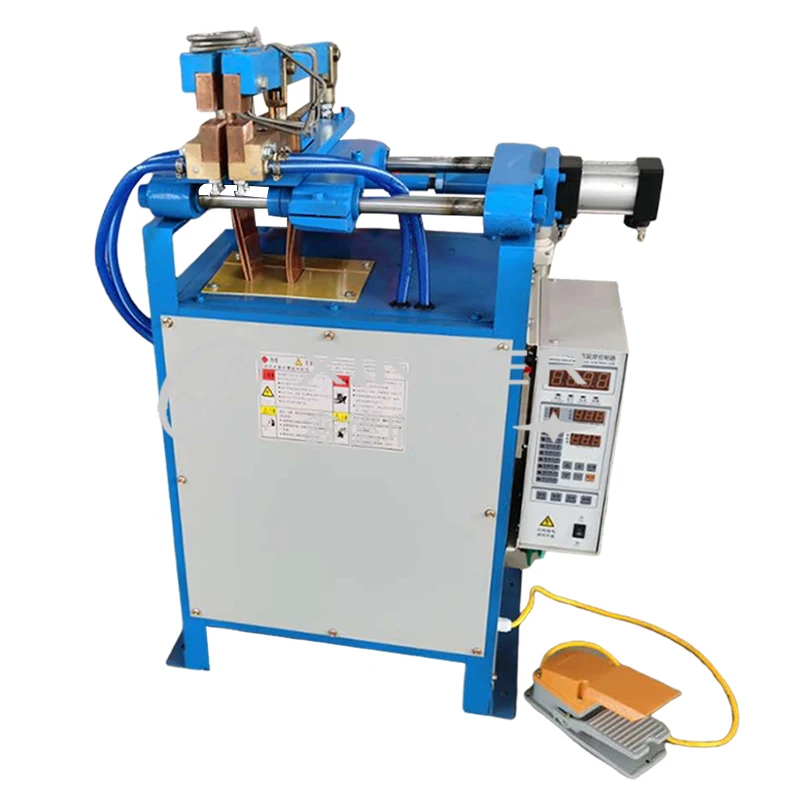 Pneumatic Handle Welding MachineSep . 13, 2024
Pneumatic Handle Welding MachineSep . 13, 2024 -
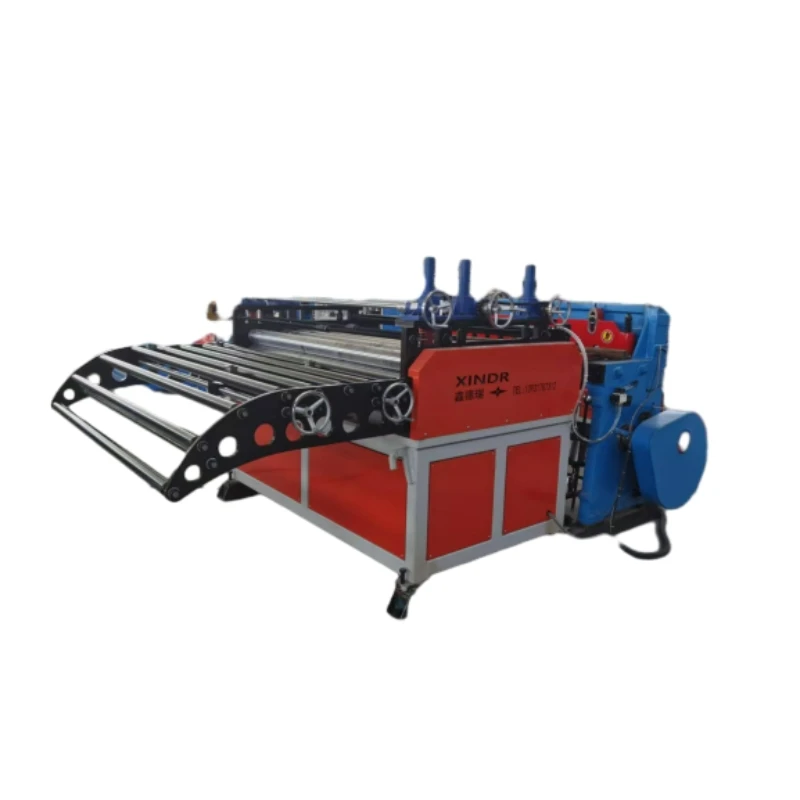 Fully Automatic Kaiping Production LineOct . 17, 2024
Fully Automatic Kaiping Production LineOct . 17, 2024 -
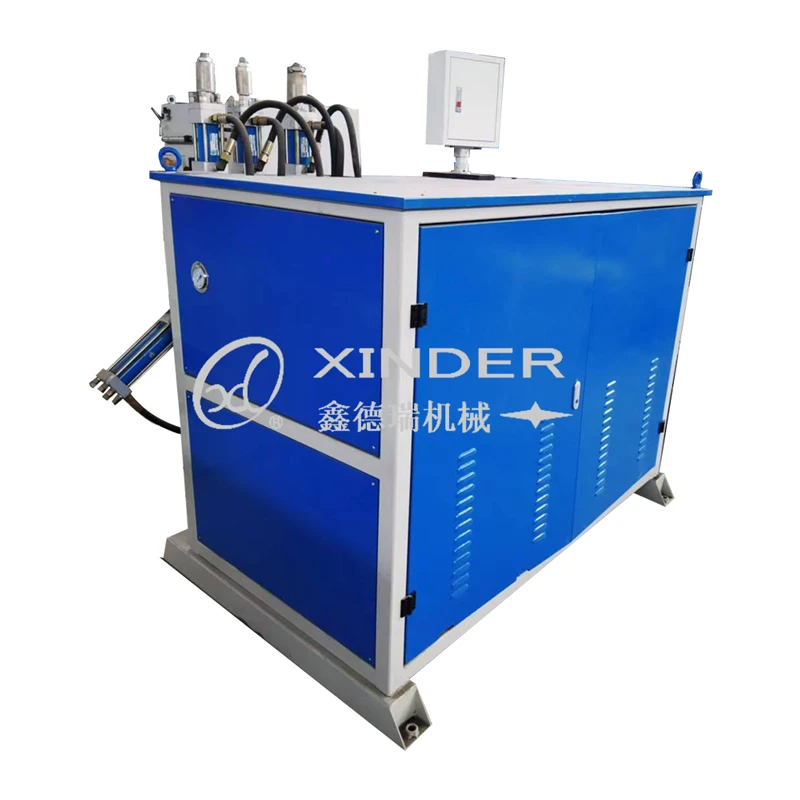 Fully Automatic Metal Bucket Lifting HeadphonesSep . 14, 2024
Fully Automatic Metal Bucket Lifting HeadphonesSep . 14, 2024

